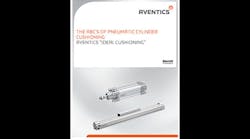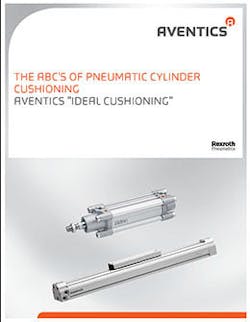The company claims its Ideal Cushioning products ensure there’s minimal bouncing and noise of the end-cover contact at the end of the piston stroke. By following the methods outlined in the manual, OEMs should see increased machine productivity.
The cushioning products are aimed at cylinders such as Aventics’ RTC rodless models and PRA/TRB/ICL ISO 15552 cylinders. Both enable precise pneumatic-cushion adjustment and feature elastic elements for impact cushioning.
The 12-page manual includes instructions and charts. It is available for download or hardcopy by visiting www.aventics.com/us/idealcushioning.


